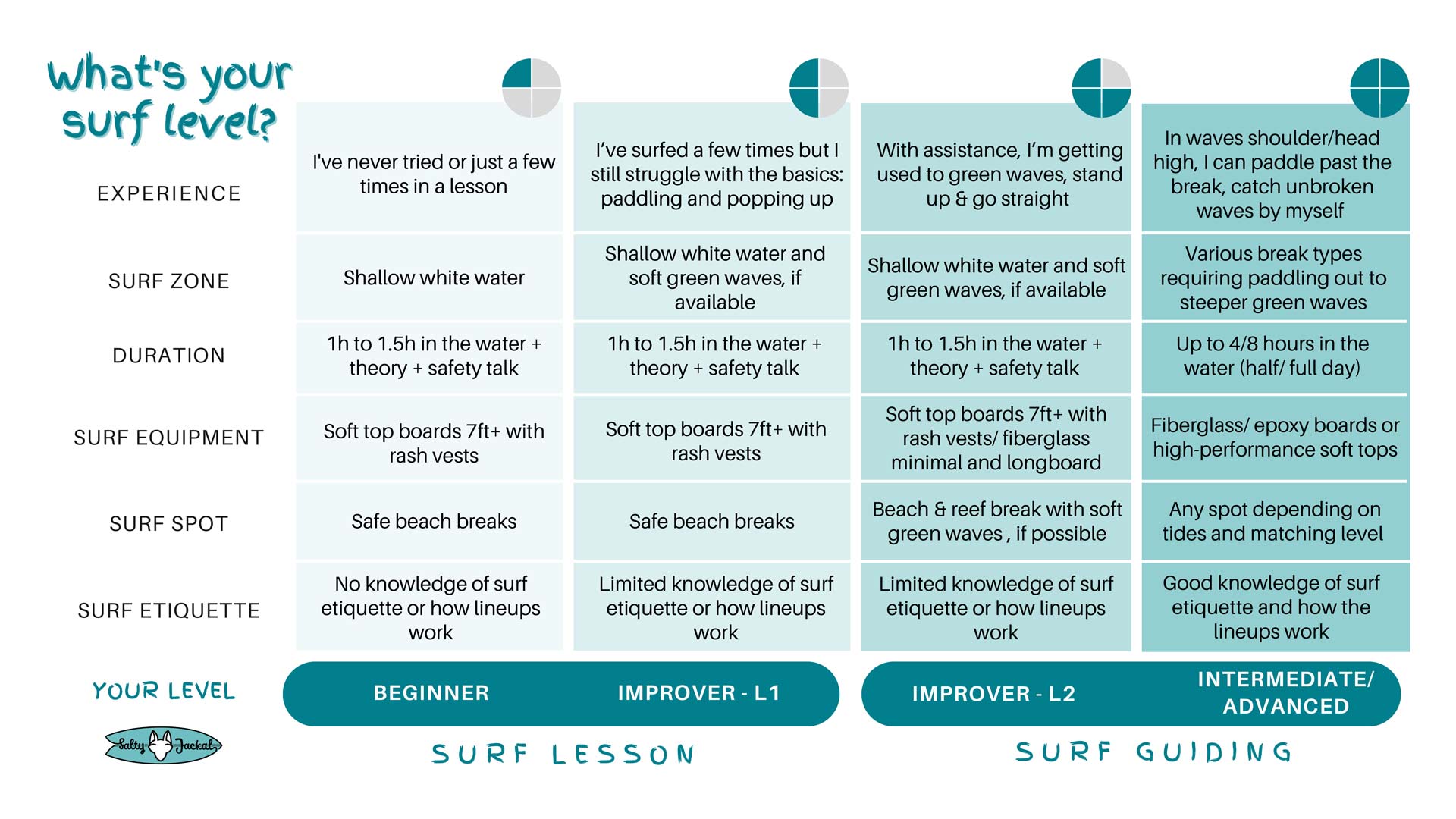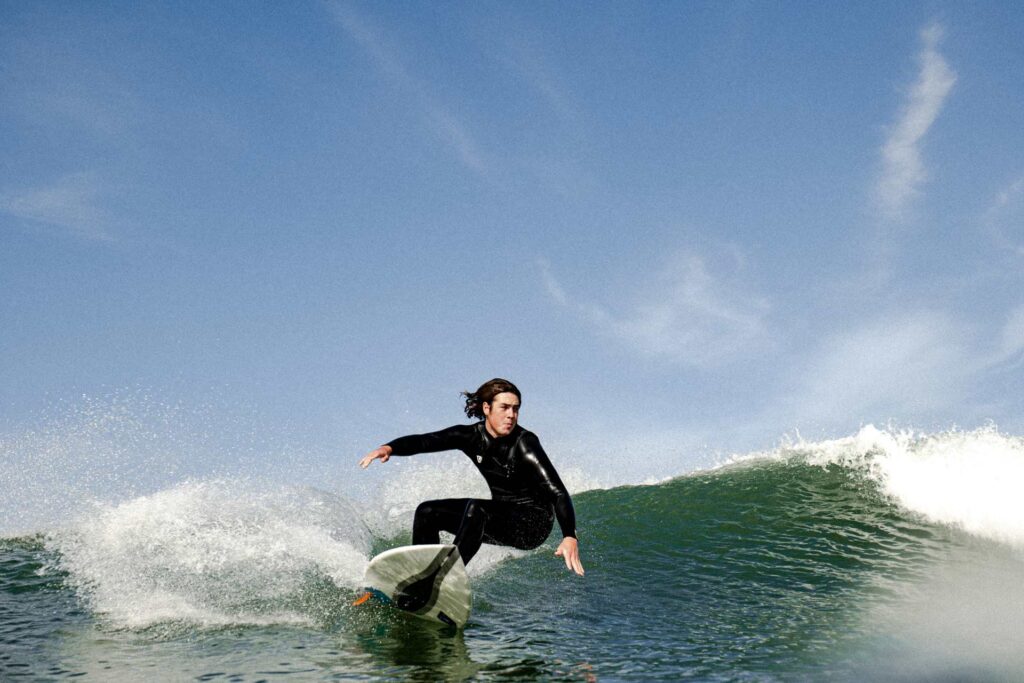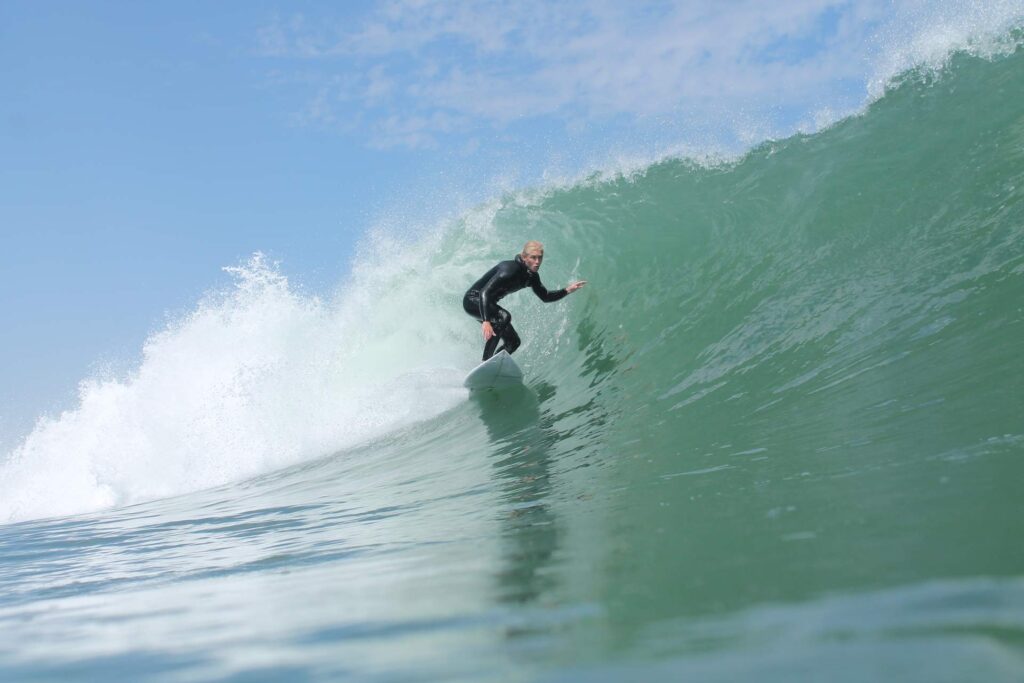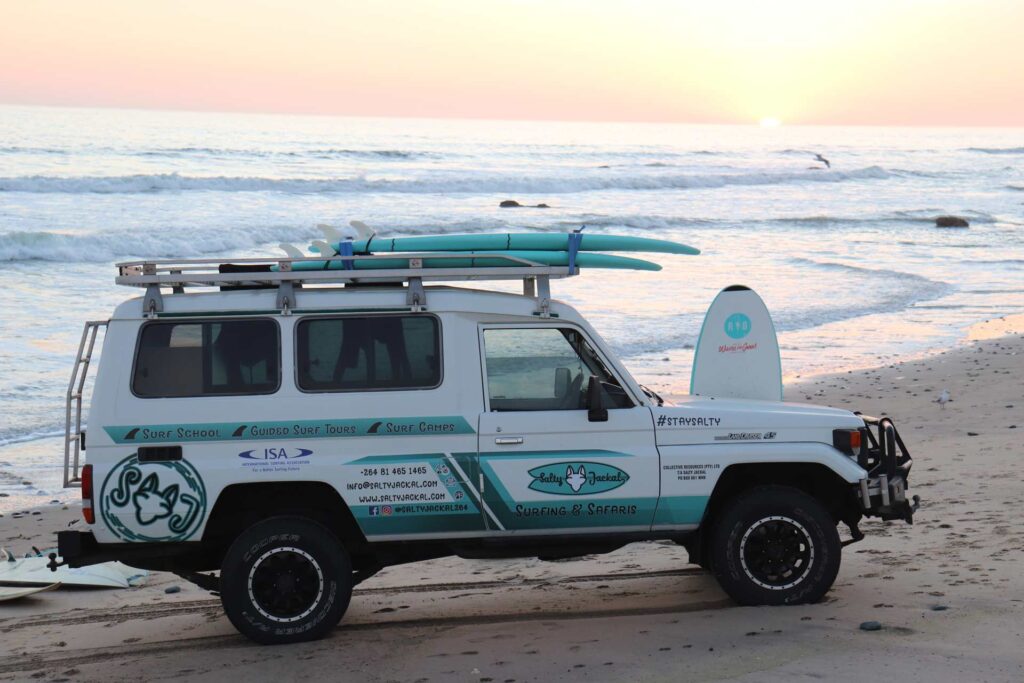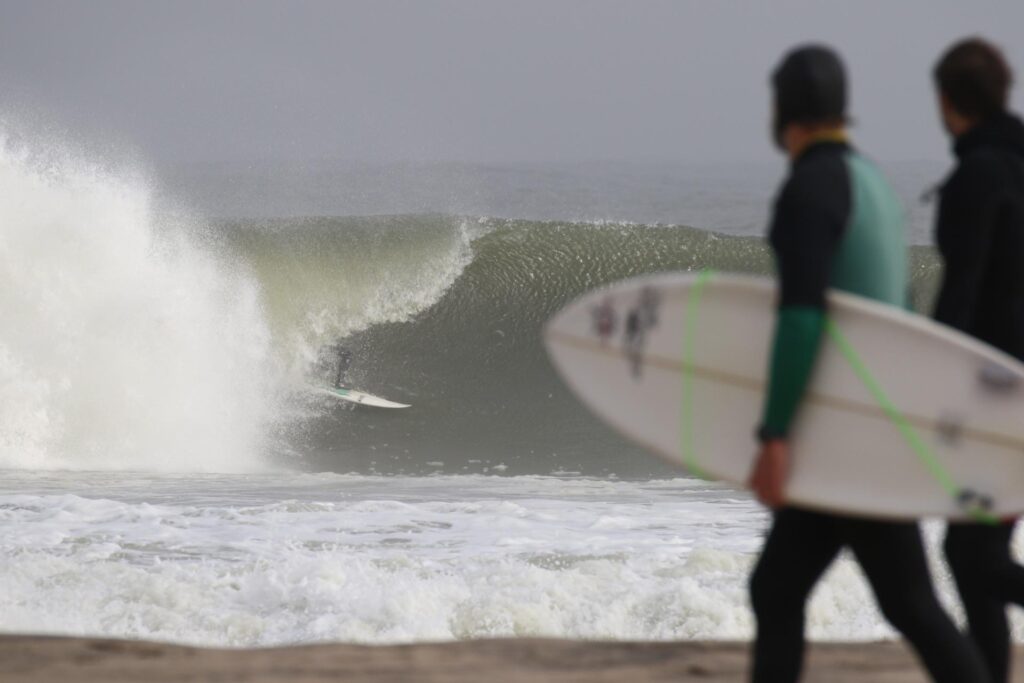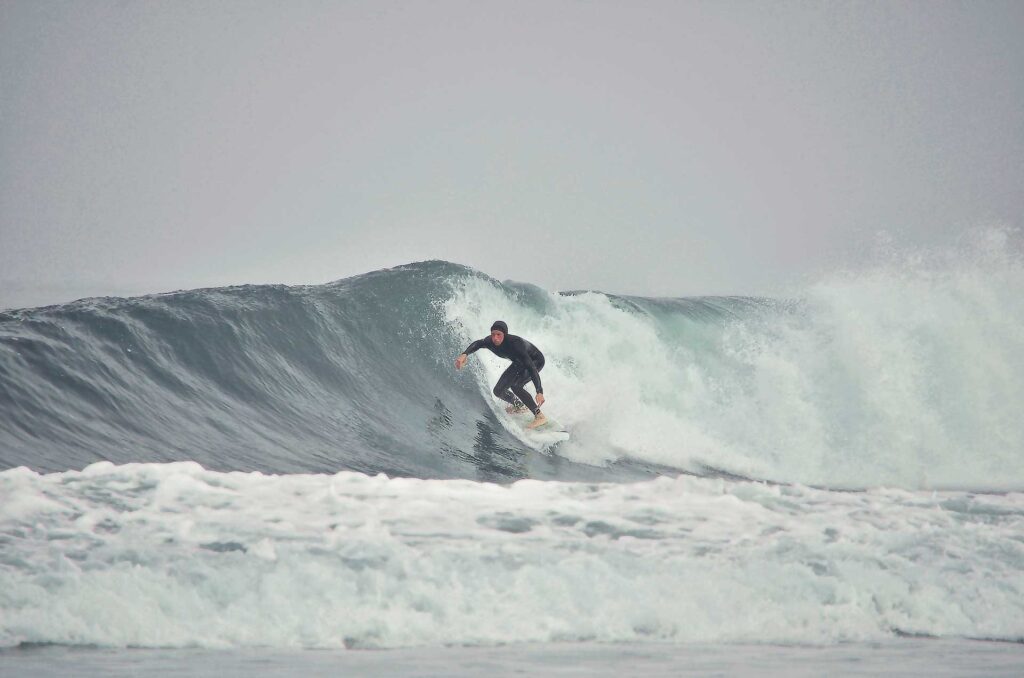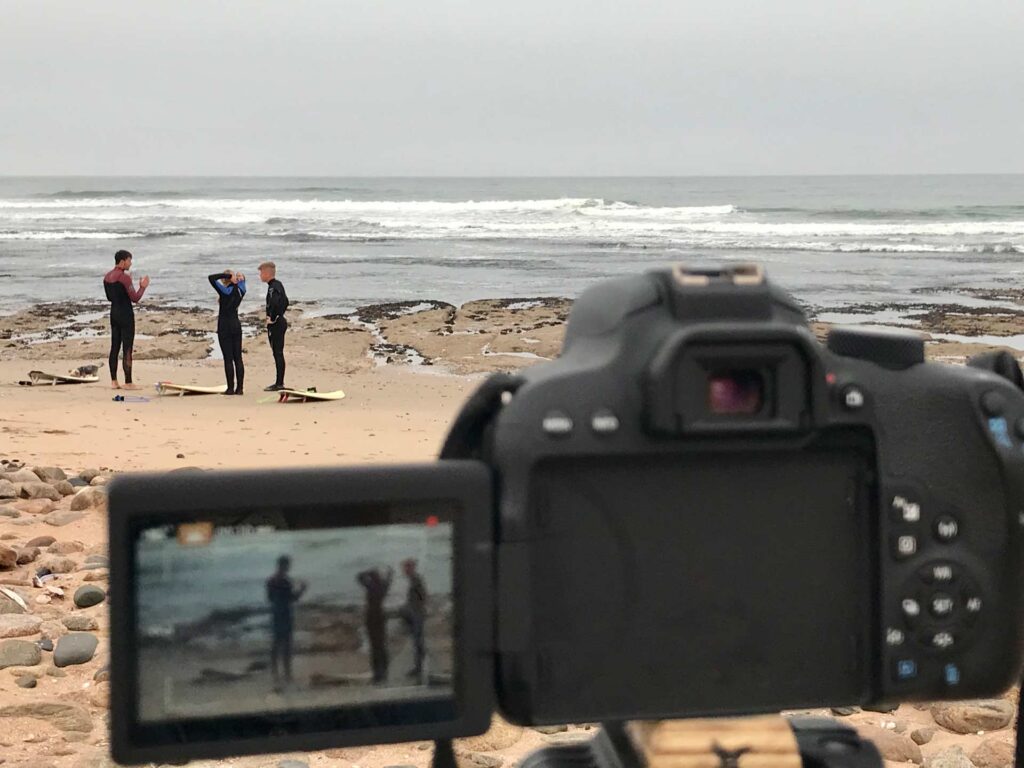Surf Lessons & surf guiding
Let’s Go Surfing!
SALTY JACKAL Surf School
Beginner – Intermediate Level
Swakopmund and the surrounding area have some beautiful empty beaches which are safe for beginners to learn surfing on.
Our ISA qualified surf instructors introduce you to the fun of surfing in a safe, step by step way according to your experience and ability level. Surf sessions are organised daily and depend on the conditions.
You can either join beginner level lessons or intermediate guided sessions.
Qualified Instructors
ISA Level 1 & 1st Aid Trained Instructors
All gear included
Or use your own if you prefer
Transport included
From Salty Jackal Surf School or meet us at the beach
Learn to surf in Namibia
Whether you’re a newbie or have surfed before, Namibia’s stunning Skeleton Coast has the perfect conditions for an unforgettable surfing experience.
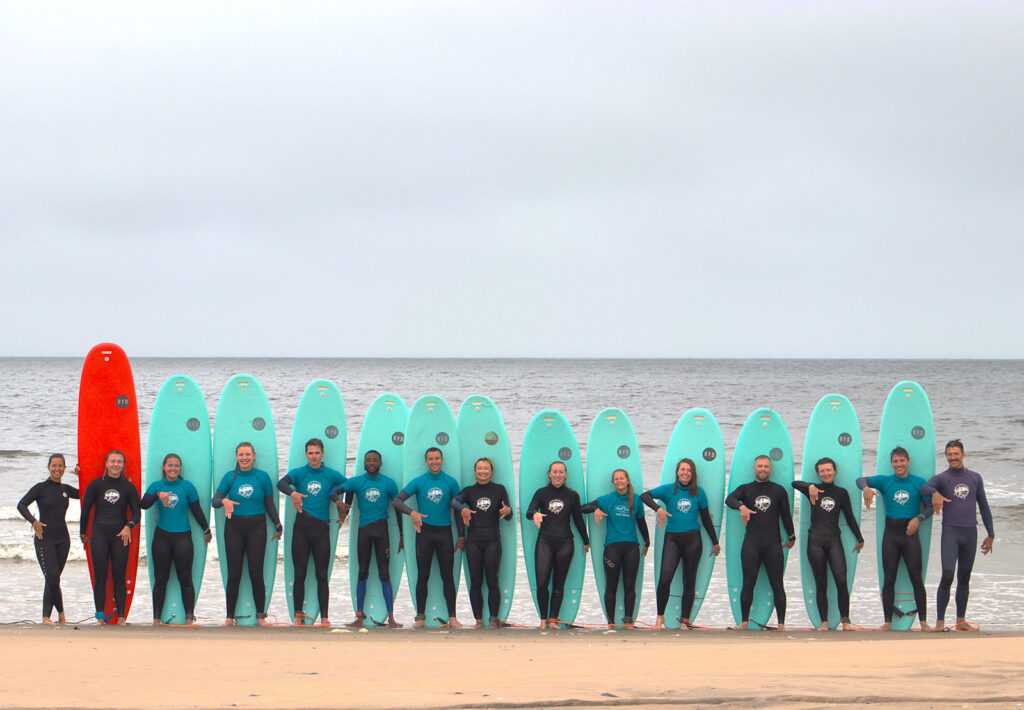
Once-off group lesson
Join a Surf School lesson with other surfers of your level
NAD 850 pp
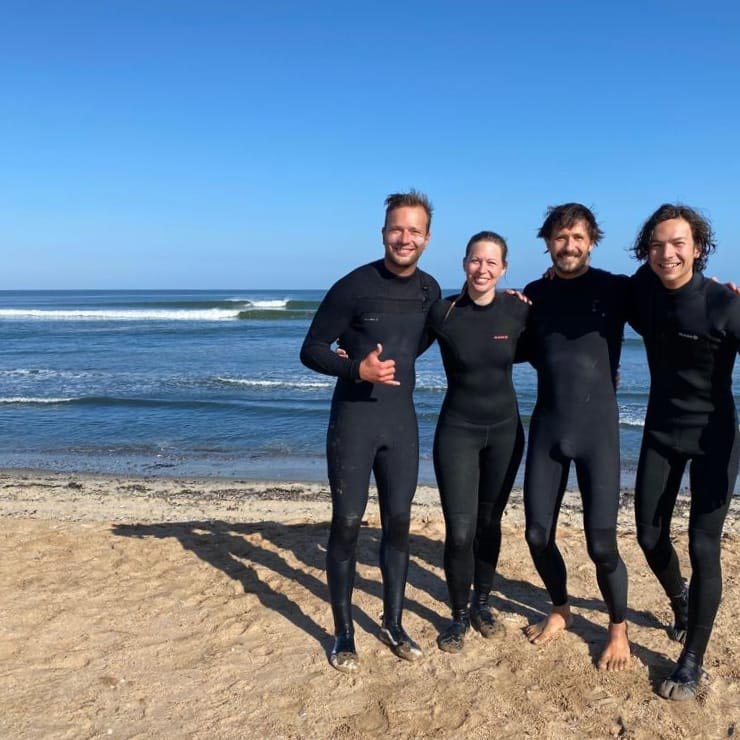
Private group lesson
A private session for your family or friends according to your needs
NAD 1050 pp
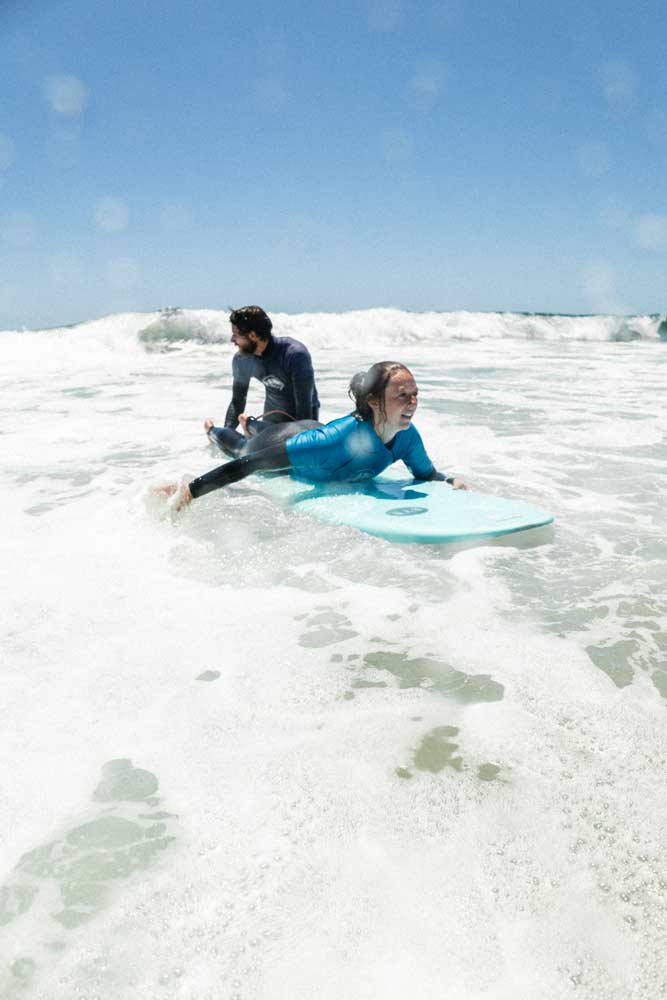
1-on-1 lesson
A private surf session with an instructor dedicated only to you!
NAD 1600 pp
Let’s go surfing!
Surf Season Guide
Certain seasons are more suited to certain surfers.
And of course since surfing is at the mercy of nature, these guidelines are not 100% accurate – each year is different and there are always surprises, like scoring Skeleton Bay for Christmas!
Swell: Namibia has consistent waves all year round. Our coast is surfable close to 365 days of the year with good-excellent conditions of clean high period swells on over 250 days of the year.
Weather: Mild but moody – we can have 4 seasons in any one day. Air temperatures rarely drop below 10 °C even in winter. Any day of the year can turn out sunny with temperatures usually in the 20’s and rarely, when we have hot desert winds, even well into the 30’s. When the sun doesn’t shine due to fog, air temperatures are usually 15-20 °C.
Wind: Most days have zero or slight wind in the morning – this is prime surfing time often with glassy conditions. Late morning usually brings a mild to strong onshore which lasts well into the afternoon. Sometimes there is an evening glass off when the wind dies down and it’s time for that sunset session.
| Surf seasons | Swell | Air Temp | Sea Temp | Wetsuits |
|---|---|---|---|---|
| Dec-Feb | Small to medium | 16-27 °C | 17-22 °C | 3/2 mm or 4/3 mm |
| March-April | Small to medium | 16-23 °C | 14-18 °C | 4/3 mm |
| May-August | Small to big | 10-20 °C | 12-17 °C | 4/3 mm |
| Sept-Nov | Small to medium | 14-23 °C | 12-17 °C | 4/3 mm |
Surf Guiding
Intermediate – Elite Level
We take you surfing along the Skeleton Coast. Our local guides know how to find the wave best each day according to your preference.
For the tube-lords out there, we offer strike missions to the longest barrelling wave known – Skeleton Bay, all you need to do is fly to Walvis Bay and we’ll pick you up there.
Local surf guide
Stoked to paddle out with you
All gear included
Or use your own if you prefer
Transport included
Our 4×4 takes you everywhere
Prices Surf Guiding
Half day in group (4h)
NAD 850 pp
Half day 1 on 1 (4h)
NAD 1600 pp
5 half day session package
NAD 3400 pp
Full day in group (10h)
NAD 1850 pp
Full day 1 on 1 (10h)
NAD 3600 pp
Full day Skeleton bay
NAD 1800 pp
Surf Camps & Surfaris
Beginner – Advanced Level
Join us for a 7 days and 7 nights program, including surfing, accommodation, exclusive activities and other perks.
See full information and available dates below.
Photo & Video
Capture the stoke
A dedicated photographer taking photos and or videos of your group’s surf sessions.
Prices Photo & Video
Half/Full day per group
On request
Contact us for more information.
Rental & Repair
Boards & Wetsuits
We have a variety of boards for you to shred on – shortboards, longboards, fishes, soft tops.
Our wetsuits are all 4/3mm and we have suitable sizes for kids & adults.
Rental Prices
Half day (4h) – per set
NAD 500
Per 24 h – per set
NAD 700
Per week – per set
NAD 3500
Contact us for more information.

